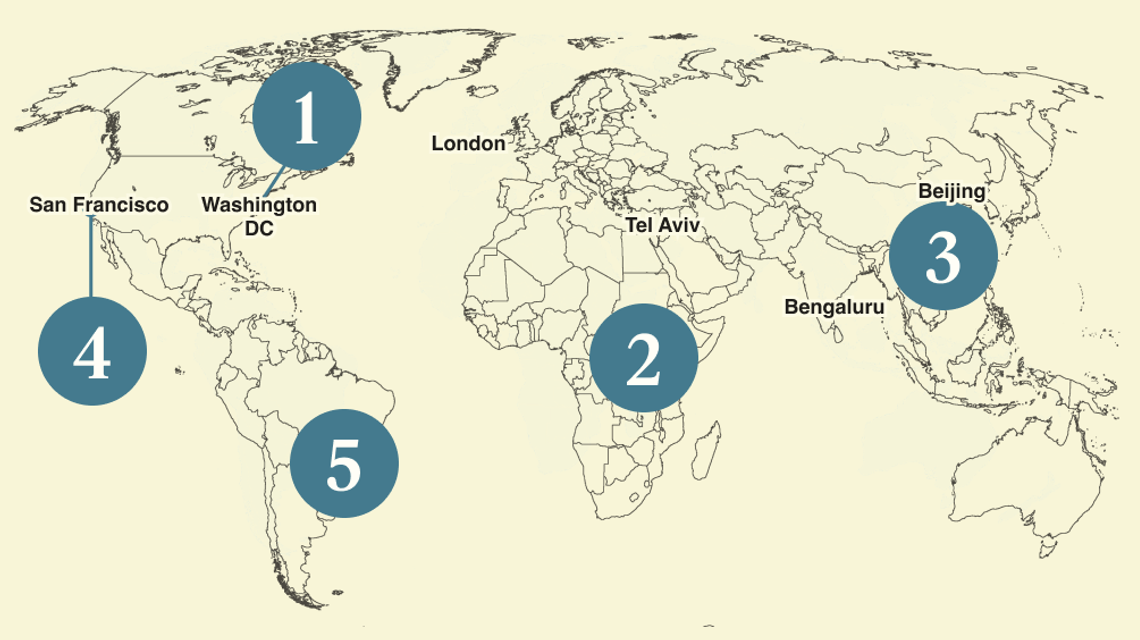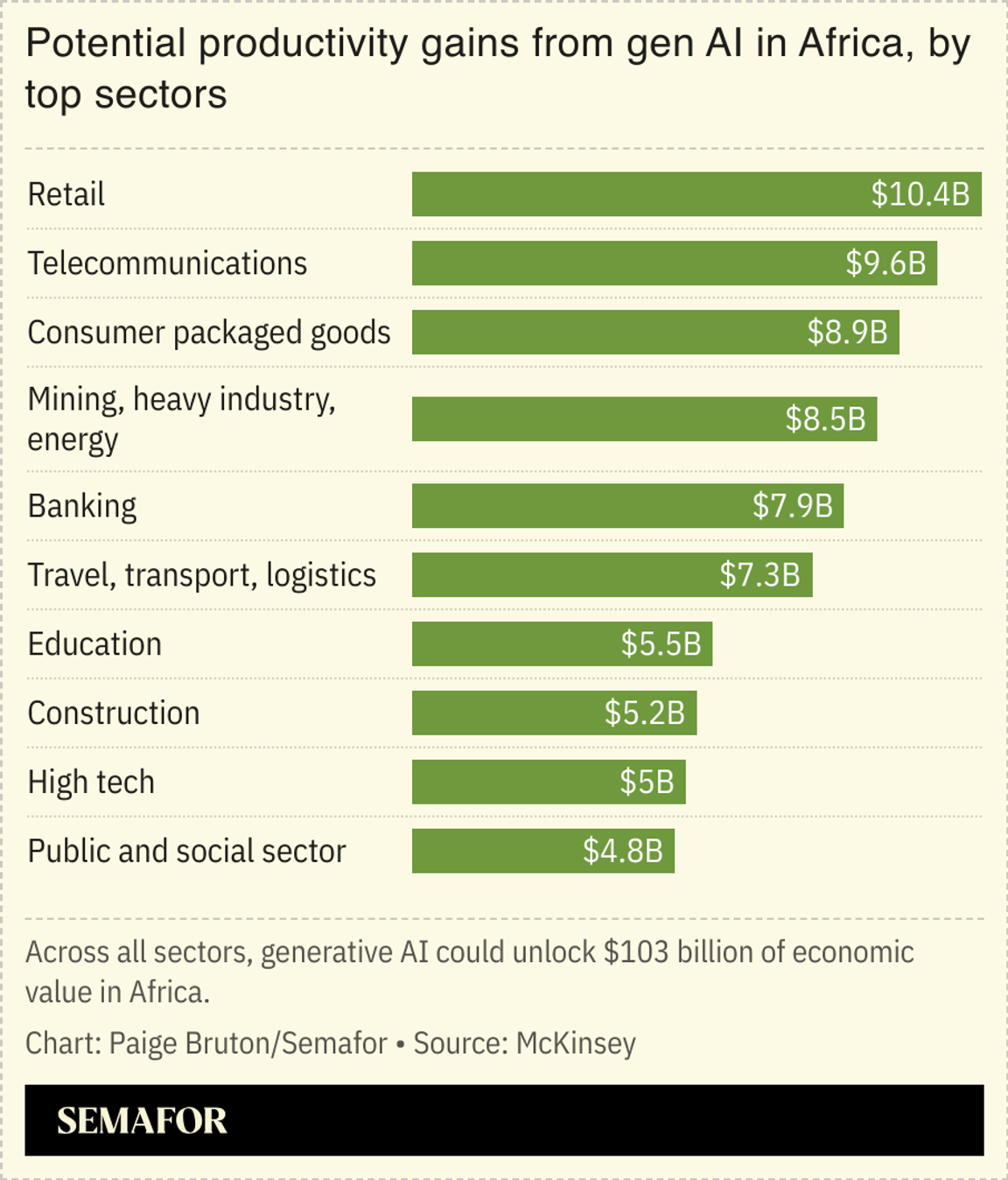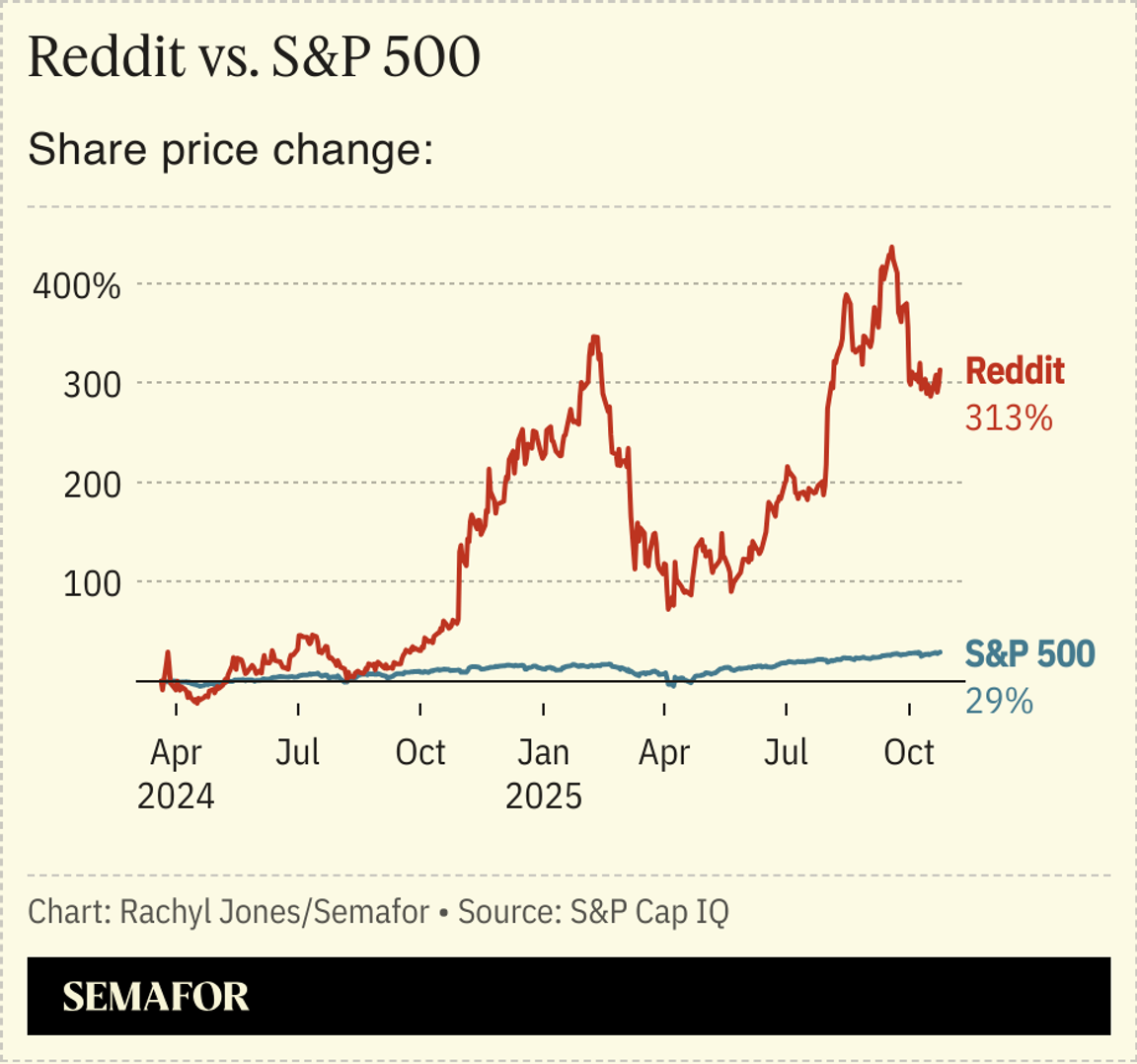| | In this edition, GM leapfrogs Tesla in a new autonomous vehicle feature, and Reddit flexes its muscl͏ ͏ ͏ ͏ ͏ ͏ |
| |  | Technology |  |
| |
|
 - Quantum’s NASA
- AI falls short in Africa
- Alibaba takes on Meta glasses
- Reddit v. chatbots
- Brazil monitors LGBTQ+ hate
 Why Tesla may hold the key to the future of driverless cars, and a Virginia politician debates his opponent, as AI. |
|
 Last year, when I tested General Motors’ Super Cruise on a 766-mile road trip, I thought the automaker might be close to a game-changing product: A system that would allow customers to take their eyes off the road while driving on certain stretches of highway. GM finally announced that capability on Thursday, leapfrogging Tesla and setting up an interesting contest that illustrates different strategies in autonomous driving. Tesla’s Full Self Driving technology is more advanced than GM’s, but it also isn’t as useful — at least not today. For $100 per month, Tesla drivers can let go of the wheel and watch in awe as their cars deftly navigate practically any situation as well as a human. But if they look away, or even pick up their cell phones, their cars will instantly notice and eventually shut off. Too many “strikeouts” and drivers will lose access completely. AI researchers haven’t figured out how to give self-driving cars human-level common sense, which would prevent the sliver of unpredictable situations where they currently get confused. If Tesla were able to solve that problem, it could be the first company to reach Level 5 autonomy, or a car that can drive anywhere without anyone behind the wheel. That is no easy task, and the underlying issue plagues the entire AI field — not just autonomous driving. The leader in robotaxis today is Google’s Waymo, whose technology in some ways is philosophically closer to GM’s than to Tesla’s. Waymo has honed in on specific geographies and, with plenty of human hours, built a system of redundant safety measures and remote oversight that enables driverless taxis to carry passengers with near-flawless execution. Tesla eschewed expensive lidar sensors and brute force tactics aimed at narrow operating conditions. Instead, it took a simplified approach that utilized cameras and a centralized “brain” that could control the car with lower latency. The Tesla approach has the potential to quickly hit global scale in a way the others do not. If Musk’s vision is realized, other approaches will seem antiquated and limited. |
|
What’s really behind quantum |
| |  | Reed Albergotti |
| |
 Nathan Howard/Reuters Nathan Howard/ReutersCiting unnamed sources, The Wall Street Journal reported yesterday that the White House is considering taking a stake in several quantum computing companies to share in the upside of the technology. The Commerce Department reportedly says it’s not true. Either way, it’s a good opportunity to explain where quantum computing is today. University research and private-sector breakthroughs have shown that quantum computing is real. But it’s only been proven on a small scale. For quantum computers to be useful, they need to be made a lot bigger. It might be possible to do that today, but it would take billions of dollars — perhaps hundreds of billions — to make it happen. The private sector, including companies like Google and IBM and startups like PsiQuantum, are working on ways to make scaling the technology practical and cost-effective. Ultimately, it needs to be profitable. When a quantum computing company says the technology is here today and generating revenue, it’s most likely being used to solve optimization problems that supercomputers handle pretty well. The quantum computers Google and others are talking about would revolutionize science. If the US government wanted to profit from quantum computing, the way to do it would be to start the quantum equivalent of NASA, with a moon landing-type goal of building an at-scale quantum computer within five years. Of course, the profits would come in the form of tax revenue from the gargantuan long-term economic impact of the project — not from a spike in stock prices. But quantum computing doesn’t have handsome, church-going astronauts or a giant reminder in the sky every night of why it’s worth so many taxpayer dollars to get there. |
|
Lack of African dialects slows AI adoption |
AI adoption is delayed in Africa partly due to the models’ lack of African dialects and online access through smartphones, according to mobile network association GSMA. “There are 2,000 languages in Africa and those languages are not represented in the AI models,” the group’s Director General Vivek Badrinath said at the Mobile World Congress in Rwanda this week, Bloomberg reported. He added that roughly 790 million people in Africa live in areas with internet access but don’t have smartphones. “You need to bring the unconnected onto the internet, and you need to bring content to them in their languages,” he said.  Where AI adoption has picked up on the continent, China’s DeepSeek has beat out American rivals OpenAI and Google due to its smaller energy requirements and lower cost, according to Bloomberg. Meanwhile, US-based AI companies are attempting to penetrate the market through lower cost subscriptions, university partnerships, and research investments. |
|
Looking through the AI lens |
| |  | Reed Albergotti |
| |
 Alibaba’s new smart glasses. Courtesy of Alibaba. Alibaba’s new smart glasses. Courtesy of Alibaba.Alibaba priced its new Quark AI glasses at $660, a more tempting offer than Meta’s new $800 Ray-Ban Display version, as it looks to compete on price in the AI hardware space. It’s difficult to compare the two devices, though, because Meta’s version is controlled by a wristband that works by reading the electrical signals in the user’s muscles. The wristband is the real innovation and could eventually be a platform in itself that allows third-party developers to integrate wristband controls into other software. Considering the Alibaba version is just a pair of glasses, the price is actually pretty comparable. Where Alibaba might have an edge is on the back-end AI powering the device: The company’s Qwen language models have been popular with developers. |
|
 American Eagle’s summer campaign with Sydney Sweeney blew up in ways no one could’ve imagined, but its chief marketing officer, Craig Brommers, knew they were going to hit a cultural nerve. This week, Ben and Max bring on the AE CMO to give us an inside look into the “Great Jeans” campaign, what he made of the controversy that surrounded it, and how Trump and Vice President JD Vance boosted their sales. They also discuss how marketing today is like running an entertainment company, why he ignored the advice of what he calls the “crisis communication industrial complex,” and whether their campaign with Travis Kelce was timed to Kelce’s engagement to Taylor Swift. Listen to the latest episode of Mixed Signals now. |
|
Reddit’s value in the AI age |
One of the byproducts of the chatbot explosion is the world has come to know the value of Reddit. Google inked a $60 million deal to use the platform’s content to train large language models. And everyone else seems to want it too, even if they aren’t willing to pay for it. Reddit sued Anthropic this summer for training on it without permission.  Reddit data is also coveted by AI search engines. Earlier this week the company filed a lawsuit against a group of data-scraping companies for allegedly pilfering its content and selling it to Perplexity. If the case continues on to discovery, the list of defendants could expand. Another interesting wrinkle is that the lawsuit doesn’t allege that Reddit itself was scraped. Rather, the content came from Google searches that included short summaries of Reddit articles. Those summaries then found their way into Perplexity’s search results, the suit alleges. Perplexity denies wrongdoing. Reddit has to show that Perplexity circumvented copyright protections by purchasing the scraped content and that Reddit was harmed in the process. Scraping the web itself is not illegal, but if it is used as a way to violate copyright protection, the scraper could be found liable. Reddit will have to explain why it’s not harmful to have summaries of its content appear in Google search results (Google doesn’t pay for those), but it is harmful when the content shows up on Perplexity. Like all of these AI copyright lawsuits, a lot of it comes down to vibes. The internet agreed on behavioral norms. AI is now taking a sledgehammer to them. |
|
AI monitors online homophobia in Brazil |
 The 2025 Pride parade in Sao Paulo. Jorge Silva/Reuters. The 2025 Pride parade in Sao Paulo. Jorge Silva/Reuters.Brazil has launched an AI platform that continually scans the internet and collects statements that it considers disinformation or hate speech against the LGBTQ+ community, which can then be used to prosecute offenders, Brazilian news site GP1 reported. The offense falls under Brazil’s hate crime law, which in 2019 expanded to include homophobia and transphobia, and threatens prison time for the convicted. The AI, called Aletheia, monitors social media, blogs, and news sites. Paying the program’s staff and maintaining the AI will cost roughly R$140,000 ($26,000) per year. The initiative marks a new kind of large-scale, AI-powered speech surveillance system. With blowback from conservative circles, it tests what governments and the public consider acceptable use of the technology. Globally, similar AI could help law enforcement monitor potential public safety threats online or find the root of hate campaigns — though it risks being mishandled, like by targeting political dissenters. |
|
 John Reid for Lt. Governor of Virginia/YouTube John Reid for Lt. Governor of Virginia/YouTubeA Virginia Republican candidate running for lieutenant governor held a debate with an AI version of his opponent this week, after she declined to appear in person. John Reid stood at a podium across from a television screen displaying an image of state Sen. Ghazala Hashmi, D-Richmond, and answered questions on minimum wage, electric vehicles, and education from a recorded moderator. The stunt can’t be measured as a realistic debate — Reid’s team put together his opponent’s responses based on Hashmi’s public comments and used AI to replicate her voice — but it showcases the bizarre ways AI can show up in politics as candidates experiment with attention-grabbing tactics. New York mayoral candidates Andrew Cuomo and Eric Adams, who is no longer running, previously integrated AI into their political ads. The technology’s growing adoption in political circles may force candidates in similar positions as Hashmi to the table, when the alternative is an AI clone created by the opponent. A campaign spokesperson for the Democrat railed against the debate video, calling it a “desperate move” by Reid. |
|
|